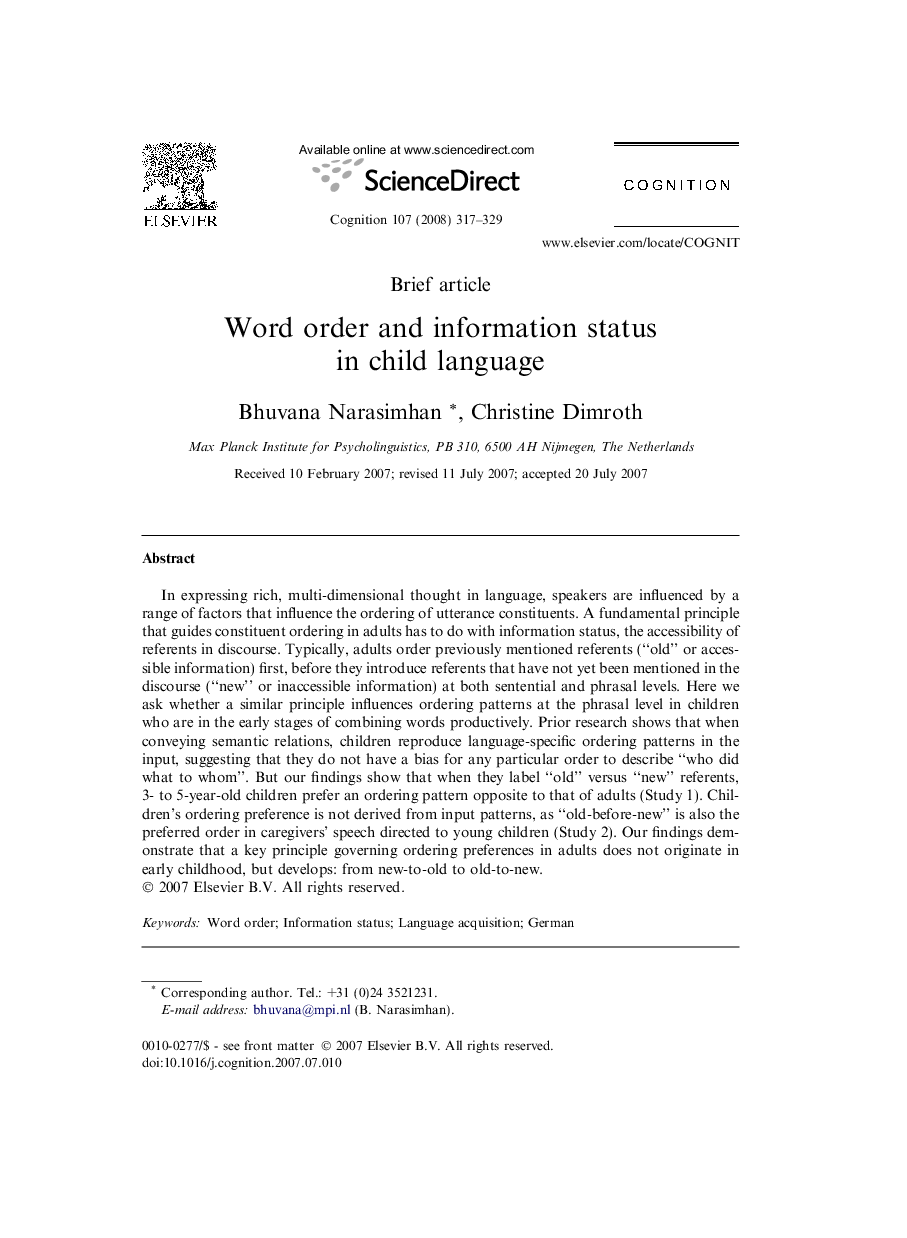| کد مقاله | کد نشریه | سال انتشار | مقاله انگلیسی | نسخه تمام متن |
|---|---|---|---|---|
| 927348 | 921970 | 2008 | 13 صفحه PDF | دانلود رایگان |

In expressing rich, multi-dimensional thought in language, speakers are influenced by a range of factors that influence the ordering of utterance constituents. A fundamental principle that guides constituent ordering in adults has to do with information status, the accessibility of referents in discourse. Typically, adults order previously mentioned referents (“old” or accessible information) first, before they introduce referents that have not yet been mentioned in the discourse (“new” or inaccessible information) at both sentential and phrasal levels. Here we ask whether a similar principle influences ordering patterns at the phrasal level in children who are in the early stages of combining words productively. Prior research shows that when conveying semantic relations, children reproduce language-specific ordering patterns in the input, suggesting that they do not have a bias for any particular order to describe “who did what to whom”. But our findings show that when they label “old” versus “new” referents, 3- to 5-year-old children prefer an ordering pattern opposite to that of adults (Study 1). Children’s ordering preference is not derived from input patterns, as “old-before-new” is also the preferred order in caregivers’ speech directed to young children (Study 2). Our findings demonstrate that a key principle governing ordering preferences in adults does not originate in early childhood, but develops: from new-to-old to old-to-new.
Journal: Cognition - Volume 107, Issue 1, April 2008, Pages 317–329